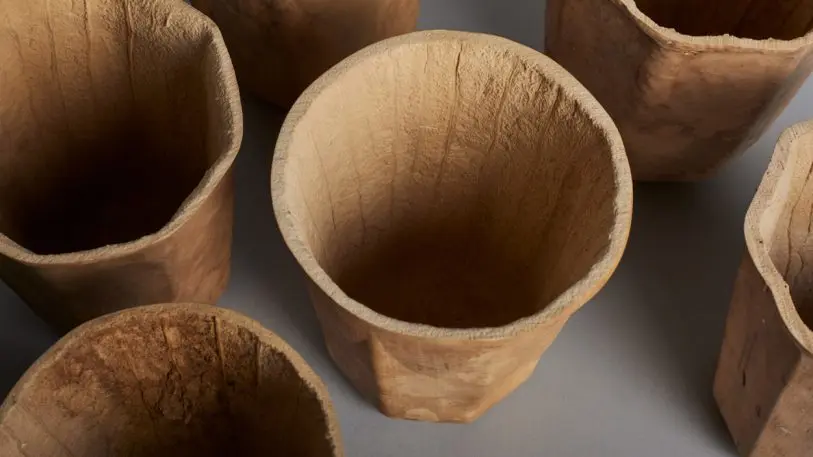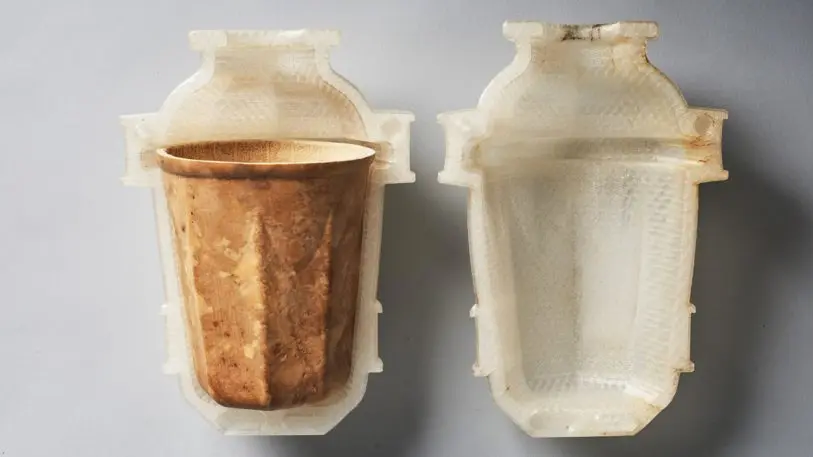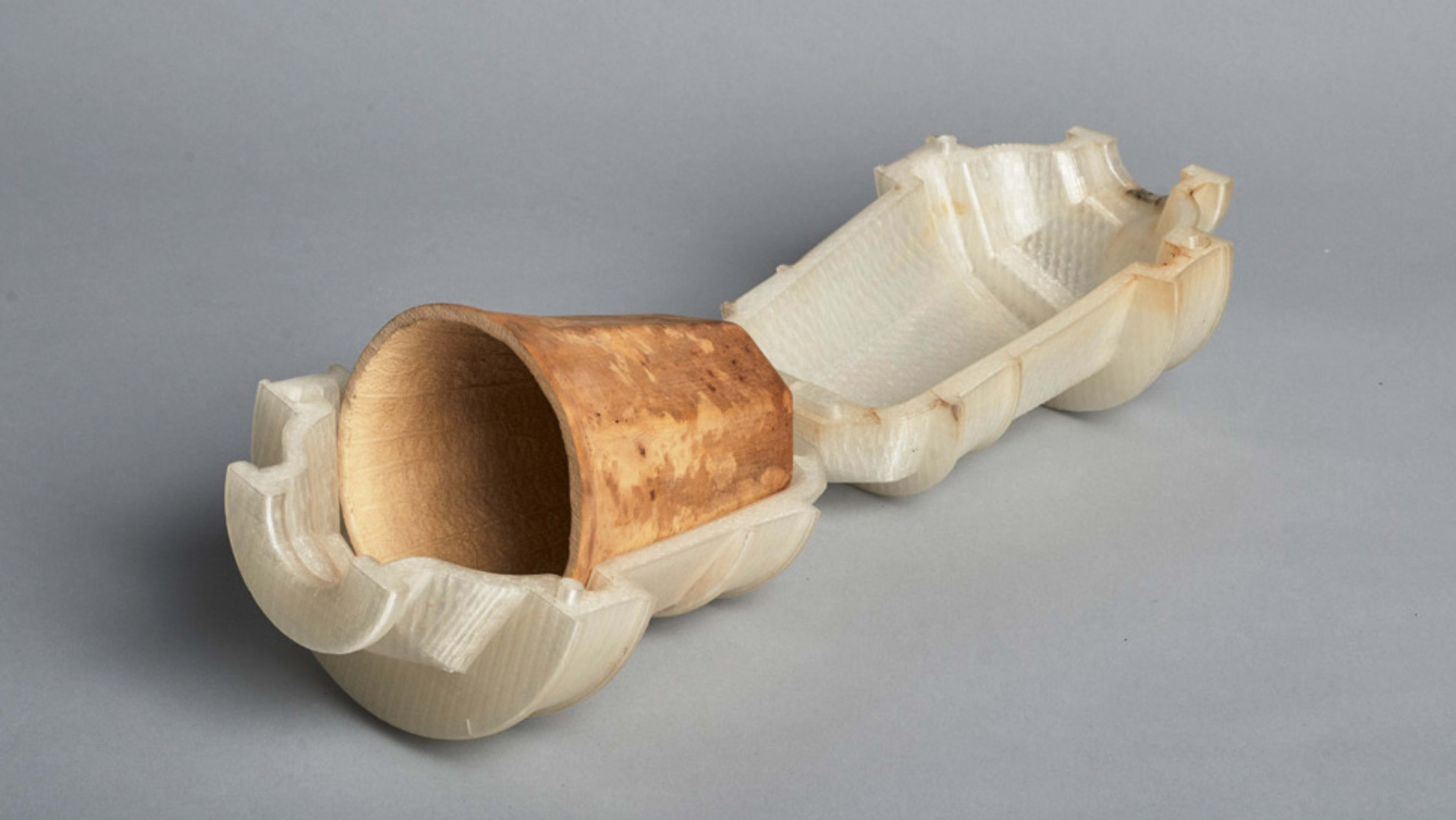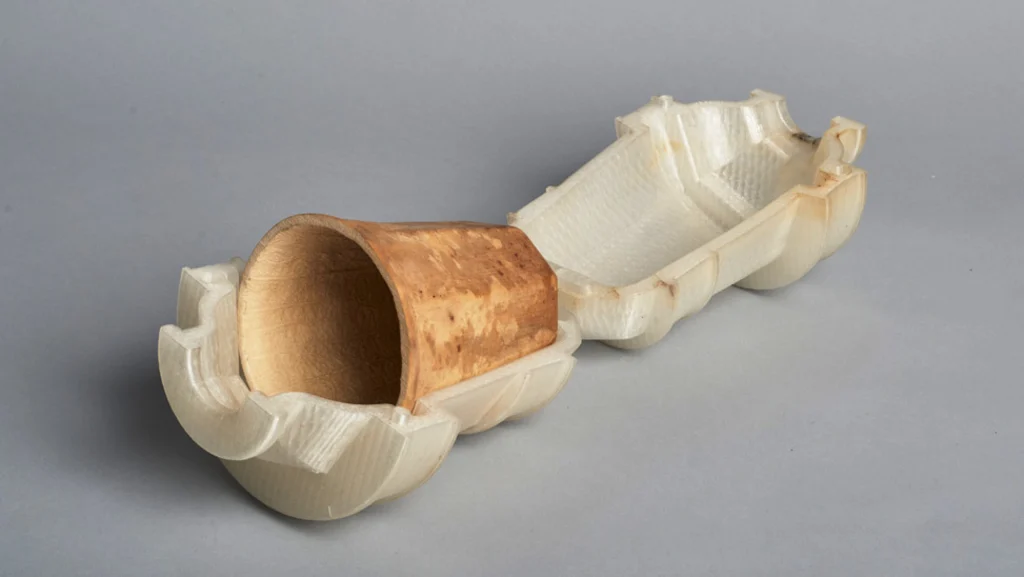Earlier this month, Starbucks announced plans to ditch plastic straws in all its coffee shops around the world by 2020. It’s a very small start in the larger effort to limit waste associated with single-use plastic. Disability advocates criticized Starbucks’s approach while environmentalists pointed out that using lids to replace straws doesn’t really reduce the use of plastic at all.
But what if your coffee came in an entirely organic kind of cup? That’s the vision of Jun Aizaki, the founder of New York-based design studio Crème Design. He and his team have created a prototype cup that’s made from a gourd grown inside a 3D-printed mold. And while the process to create the gourd cups, which he calls HyO-Cups, is time-intensive–taking a whopping five to six months–Aizaki hopes to one day mass-grow drinking receptacles, maybe even for coffee shops like Starbucks.

About five years ago, Aizaki and his team began thinking about the wasteful habit of going to the coffee shop–and how they might improve it. “What if you could just throw away a cup instead of recycling it?” he says. “What if it just went to the regular garbage, and it went back to Mother Nature?”
That led his team to think about potential materials they could use that would be able to hold liquids–like hard pasta, or some kind of rice paper. But a gourd had a track record: Gourd containers can be found all over the world, including Asia, South America, and Africa. “I knew gourds were traditionally used in many cultures as a container,” Aizaki says. “In Chinese culture, gourds were grown to hold alcohol.”

But there was a problem–because gourds grow naturally, they’re never the same shape or size, which would be vital to producing them at scale, both for shipping them efficiently and having a standardized size for the end user. “If there was a way to control that process and create something that’s more uniform and more predictable, we thought it could potentially become an alternative to the way we make things,” Aizaki says.
To solve this problem, Aizaki looked to the way watermelons are often grown in his native Japan–in square molds to make them easier to pack and ship. So the team created 3D-printed molds in several shapes to experiment with, and Aizaki planted gourds in the backyard of his home in Brooklyn so they would grow into the shape of a cup. After three summers of growing gourds, the team has settled on two main shapes: a stackable cup that has geometric facets and a flask style with a smaller opening.

Now, the team is hoping to do more experiments to make the drying process faster, perhaps by using an oven or another technique; Aizaki additionally hopes to grow the gourds in a controlled environment (rather than his backyard) so that growth isn’t limited by the weather. The team is also looking for partners to scale the idea. Perhaps Starbucks and McDonald’s, which recently teamed up to create a 100% recyclable, compostable cup, should take a look.
Recognize your brand’s excellence by applying to this year’s Brands That Matter Awards before the early-rate deadline, May 3.









